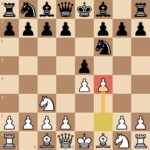Achieving centric relation (CR) is a fundamental concept in dentistry, but it’s often misunderstood. Many dentists believe that CR is about forcing the jaw back to seat the condyles, which is incorrect and potentially harmful. The key to successful bimanual manipulation for CR lies in understanding the physiological position and avoiding force. This guide provides a detailed, step-by-step approach on how to guide patients in centric relation effectively and safely.
Understanding the Importance of Centric Relation
Bimanual manipulation allows for verification of several crucial elements:
- The correctness of the physiologic position of the mandible.
- The proper alignment of the condyle-disk assembly within the temporomandibular joint (TMJ).
- The overall integrity of the articular surfaces of the TMJ.
 Dental Occlusion Stability Whitepaper
Dental Occlusion Stability Whitepaper
Alt: Dental occlusion stability whitepaper offer.
Step-by-Step Guide to Achieving Centric Relation
The following steps outline the correct procedure for achieving centric relation using bimanual manipulation:
- Patient Positioning: Recline the patient so your arms are parallel to the floor, and their chin is pointing upwards. This position facilitates optimal access and control.
- Head Stabilization: Stabilize the patient’s head by cradling it between your rib cage and forearm. A firm, stable grip is crucial to prevent movement during manipulation.
- Neck Extension: Lift the patient’s chin slightly to stretch the neck gently, ensuring your forearms remain parallel to the floor. This helps relax the muscles and allows for better positioning.
- Finger Placement: Gently position the four fingers of each hand on the lower border of the mandible. The little finger should be slightly behind the angle of the mandible. The pads of your fingers should align with the bone and stay together, as if you were going to lift the head.
- Thumb Positioning: Bring the thumbs together to form a C with each hand. The thumbs should fit in the notch above the symphysis. Remember, NO PRESSURE should be applied at this stage.
- Hinge Movement: With a gentle touch and almost zero pressure from your hands, have the patient slowly hinge open and closed in rotation (an arc of 1-2mm is acceptable), never letting the teeth touch. Do not jiggle or load the joint at this point. The goal is to allow the condyles to move to their physiologically correct position – properly seated in each fossa.
- Mandibular Retrusion: When the hinge movement is consistent, the mandible will retrude automatically, and you should feel the jaw go back. At that point, hold the jaw firmly on that hinge point. With proper hand placement, there is a torque effect from the thumbs and fingers that loads the joints in an upward and forward direction. This allows upward pressure to be maintained through the condyles while still allowing them to rotate freely.
- Joint Loading (Initial): Load the joint by applying firm (but gentle) pressure UP with the fingers on the back half of the mandible and DOWN with the thumbs in the notch above the symphysis (keeping the teeth separated). Note: Sudden heavy loading can injure retrodiskal tissue and cause considerable pain. Ask the patient, “Do you feel any tension or tenderness in either joint?” If yes, stop and determine the cause. If no, continue.
- Incremental Loading: Increase to moderate pressure, then firm pressure. With each increment of loading, ask the patient, “Do you feel ANY tension or tenderness in either joint?”. If tension or tenderness is experienced at any load interval, stop and determine the cause.
The dense vascular connected tissue that makes up the disk will be able to handle enormous pressure through it without any sort of tenderness if you have a properly aligned condyle-disk assembly, and that condyle is completely seated. And if the condyle is seated completely, such that the medial aspect of the condyle is engaged with the medial aspect of the glenoid fossa with a properly inter-closed disk, then there can’t be any stretching of the muscle. This proper seating ensures stability and comfort for the patient.
Identifying Correct Centric Relation
The key indicator of successful centric relation is the absence of tension or tenderness during load testing.
When the condyle is not completely seated in centric relation, load testing will reveal tension on the lateral pterygoid muscle. The patient may describe this as tightness, fullness, or a pulling sensation, creating awareness in the joint. Pre-existing joint pathology or intracapsular issues can exacerbate discomfort or tenderness. Remember to rely on the totality of the exam: questions, palpation of muscles, load testing, range of motion, and Doppler analysis.
Therefore, to ascertain if you have achieved centric relation, perform load testing in three pressure increments, ensuring no tension or tenderness is present in either joint.
Centric Relation with Anesthesia
Even if a patient has had a lower block, achieving centric relation is still possible. Anesthesia primarily affects sensory nerves and does not significantly impact motor function. The bimanual manipulation technique remains the same, regardless of whether the patient is numb or not. Centric relation can even be achieved while the patient is asleep, demonstrating that it relies on the natural physiological hinge of the joint.
Conclusion: Mastering Centric Relation for Optimal Patient Care
Mastering How To Guide Patient In Centric Relation is crucial for achieving predictable and stable outcomes in dental treatment. By understanding the principles of bimanual manipulation, avoiding forced movements, and carefully monitoring patient feedback during load testing, dentists can accurately identify and utilize centric relation. This comprehensive approach promotes long-term patient comfort and the success of restorative and orthodontic procedures.

